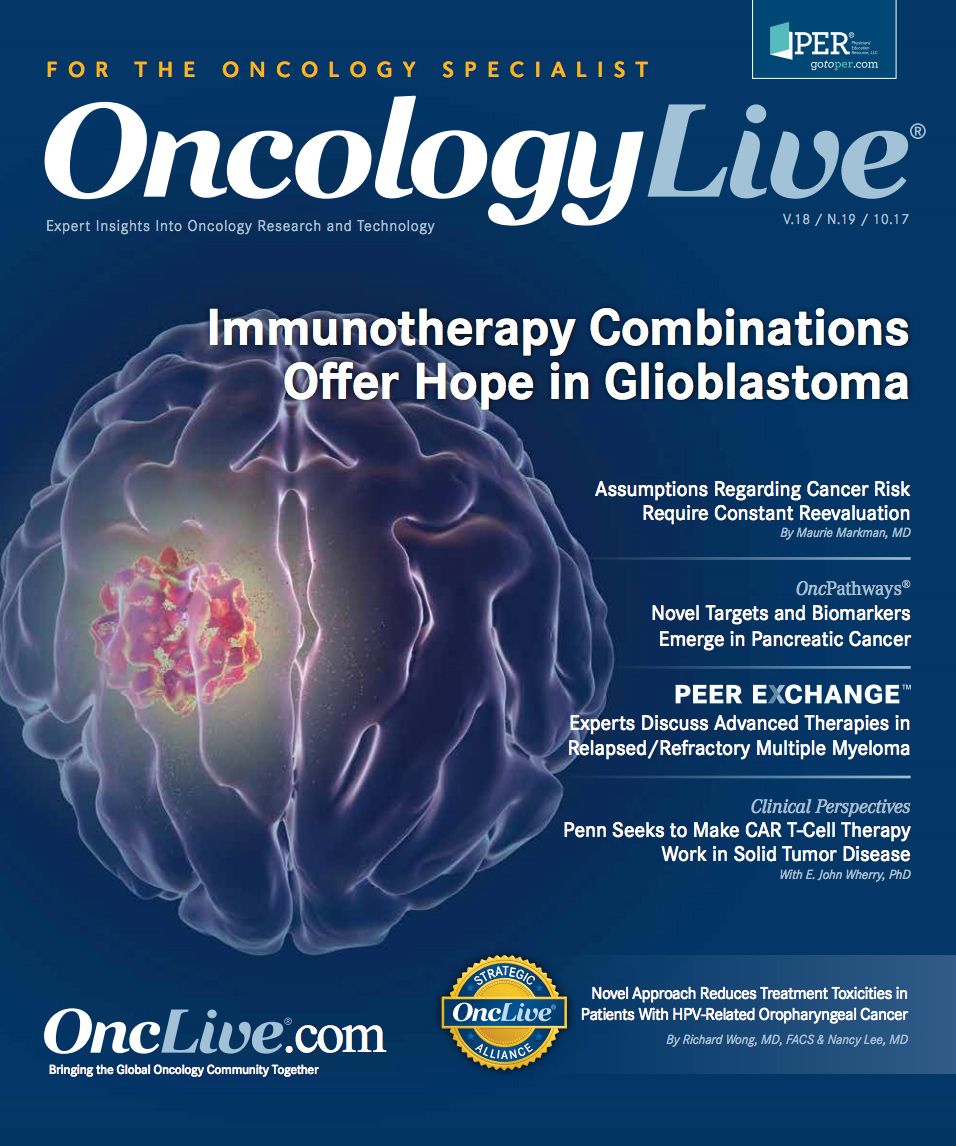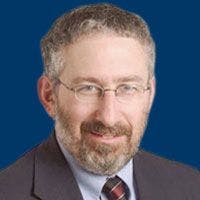Publication
Article
Oncology Live®
Assumptions Regarding Cancer Risk Require Constant Reevaluation
Author(s):
Oncologists are well aware that by the time a new antineoplastic drug or regimen first enters the pages of a traditional reference textbook, the data supporting its use, including doses, schedules, and clinical indications, may already be considerably out-of-date.
Maurie Markman, MD
Oncologists are well aware that by the time a new antineoplastic drug or regimen first enters the pages of a traditional reference textbook, the data supporting its use, including doses, schedules, and clinical indications, may already be considerably out-of-date. This is the result of the rapid acceleration in the rate of knowledge generation at both the preclinical and clinical levels in oncology. Consequently, data provided in abstracts presented at major national or international cancer meetings and in peer-reviewed journal articles are often more relevant to the practicing physician than material found within oncology textbooks.
In contrast, it has been reasonably assumed that more basic epidemiological data, which serve as the foundation for a discussion of cancer risk and the subsequent establishment of rational regional, national, and international healthcare policy, are updated even more slowly based on information generated over extended periods of time. The decades-old observation that cigarette smoking is the major etiological factor associated with the development of lung cancer has permitted investigators and health regulators to focus on this extremely critical issue with sustained efforts resulting in a substantial reduction in the risk of this terrible addiction in many areas of the world.
However, just as we have recently learned of the unexpected serious risks to public safety, including birth defects, from exposure to the Zika virus,1 or of the rapidly expanding epidemic of opioid abuse resulting from inadequate understanding of narcotic addiction following seemingly quite limited drug intake,2 the oncology community is increasingly being required to reevaluate longstanding and well-established epidemiologic and etiologic assumptions based on the presentation of new data.
The association between an individual’s smoking history and the later development of an oropharyngeal cancer has long been recognized, but who would have predicted even as recently as a decade ago that sexual transmission and subsequent persistent infection with the human papillomavirus virus (HPV) would assume such a prominent role in the etiology of this group of malignancies? Recent data suggest that more than half of newly diagnosed oropharyngeal cancers may be the result of persistent HPV infection.3
These data are important not simply because they substantially affect medical and public education in this area but also because of the differences in prognosis. Outcomes are generally superior in HPV- versus smoking-related head and neck cancer. Therapeutic management may also differ. Finally, critically relevant public health prevention strategies are strikingly different between the 2 major etiologic factors in head and neck cancer. There is a wide gulf between being told to quit smoking and obtain an HPV vaccination. Another example of this phenomenon is evident in recently reported data regarding the epidemiology of malignant mesothelioma, a cancer that carries with it an overall median life expectancy of only 1 year from the date of diagnosis.4
Based on landmark observational studies of the association between this fortunately relatively uncommon cancer and prior prolonged exposure to asbestos, and because of subsequently introduced major public health and governmental regulatory agency efforts to minimize the risk of such exposure, there has been a substantial reduction in the incidence of this malignancy in the United States.
With this historical epidemiological background and the continued societal efforts to limit human exposure to asbestos-containing materials, it is logical to expect that the number of cases of malignant mesothelioma in the United States would have continued to decline. Unfortunately, a recent report from the Centers for Disease Control and Prevention (CDC) has provided strong evidence that this is not the case.4
In fact, the number of deaths from this most difficult malignancy was greater in 2015 (n = 2597) than in 1999 (n = 2479). And as noted in the CDC report, a particular concern is the discovery of malignant mesothelioma in a younger patient population, suggesting continued work-related environmental asbestos exposures. This runs counter to the assumed trend of late development of the cancer in individuals exposed 40 to 50 or more years in the past. These data illustrate the critical need to continue to evaluate strategies to further reduce the risk of exposure to known or suspected carcinogens within the environment.
A final example of a surprising and disturbing pattern is found in data suggesting an increasing risk of colorectal malignancies in young adults despite solid evidence of an overall decline in the risk of such conditions in older individuals.5,6 It is fair to speculate that a major cause of this higher risk among young people is the increasingly recognized epidemic of obesity in the United States, a known risk factor in colon cancer carcinogenesis. In fact, one report noted that currently, one-third of all rectal cancers are diagnosed in individuals <55 years of age, suggesting that existing screening guidelines for this malignancy require revision.5
In summary, the above examples of the changing epidemiology of cancer show that there are serious challenges to existing and often long-established assumptions and dogma. It is essential to acknowledge that optimization of the opportunity for early detection and ultimately prevention of many cancers mandate that both the scientific and clinical oncology communities continue to monitor these changes and, where necessary, modify our existing teachings and health policy strategies.
References
- De Oliveira Melo AS, Aguiar RS, Amorim MM, et al. Congenital Zika virus infection: beyond neonatal microcephaly. JAMA Neurol. 2016;73(12):1407-1416. doi: 10.1001/jamaneurol.2016.3720.
- Volkow ND, Collins FS. The role of science in addressing the opioid crisis. N Engl J Med. 2017;377(4):391-394. doi: 10.1056/NEJMsr1706626.
- Gillison ML, Chaturvedi AK, Anderson WF, Fakhry C. Epidemiology of human papillomavirus-positive head and neck squamous cell carcinoma. J Clin Oncol. 2015;33(29):3235-3242. doi: 10.1200/ JCO.2015.61.6995.
- Mazurek JM, Syamlal G, Wood JM, et al. Malignant mesothelioma mortality — United States, 1999-2015. MMWR Morb Mortal Wkly Rep. 2017;66(8):214-218. doi: 10.15585/mmwr.mm6608a3.
- Siegel RL, Fedewa SA, Anderson WF, et al. Colorectal cancer incidence patterns in the United States, 1974-2013. J Natl Cancer Inst. 2017;109(8). doi: 10.1093/jnci/djw322.
- Siegel RL, Miller KD, Jemal A. Colorectal cancer mortality rates in adults aged 20 to 54 years in the United States, 1970-2014. JAMA. 2017;318(6):572-574.





























